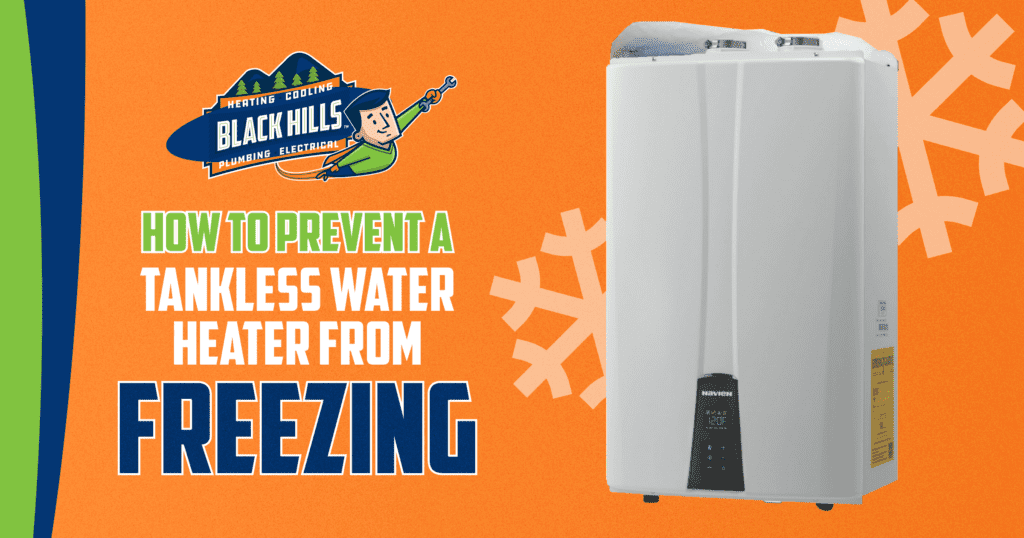Tankless water heaters save space, conserve energy, and provide instant hot water. They afford many advantages for the average home. But in low temperatures, standing water in a unit can freeze; in doing so, it becomes a solid (blocking flow) and expands (potentially damaging internal components). Here’s how to prevent a tankless water heater from freezing to avoid costly repairs.
Should You Rely on Built-In Freeze Protection Alone?
Most indoor and outdoor tankless water heaters have an electrical element that activates in temperatures from -5℉ down to -22℉. It can keep parts warm enough to not freeze. However, the internal heater might be overwhelmed if freezing conditions last a long time. Also, it requires electricity to operate, so it will fail if there is a power outage.
Steps to Avoid a Frozen Tankless Water Heater
Since your system’s built-in protection is not foolproof, it’s a good idea to take preventative measures. The following tips can protect your tankless water heater from the cold:
Install the Device in a Warmer Area
By installing a tankless water heater in a warm room, you can prevent it from freezing. If it must be installed outdoors, find a sheltered location out of reach of prevailing winds, where the surrounding air is usually warmer. Vent terminations with wind-resistant elements can also block cold air from reaching the unit.
Connect an Uninterrupted Power Source
A constant power supply will ensure the freeze protection system will function when needed. Connect the heater to a battery backup or a generator so it remains powered during an outage. If the unit doesn’t have one, install a drain-down solenoid valve that will empty the water heater if the power goes out.
Drain the Tankless Water Heater
Any quantity of standing water can freeze and cause damage. If you’re going away for at least 48 hours, drain the unit so there’s no standing water inside it. Leaving it empty is a good way to prevent a tankless water heater from freezing.
For units without a solenoid valve, turn off the gas, cold water, and temperature controls. Then disconnect the power source and close the cold water, hot water, and main valves. Remove the purge port valve caps to relieve pressure and attach hose lines to each valve to drain the unit. Also, use the valves to isolate the heater when you shut it down so it’s fully winterized.
Insulate the Water Heater
You can stop the unit from freezing by preventing heat from escaping in the first place. Primarily, you want to apply fiberglass or polyethylene insulation to the pipes connected to the tankless water heater. Heat tape is another option that can prevent freezing, but it only works when there is power.
Run the Water
You can avoid a frozen water heater by keeping the water in motion. Turn on a faucet slightly so there’s only a trickle. About 0.1 to 0.2 gallons per minute is typically enough. Do this only during periods of the most extreme cold to avoid wasting too much water. You can also collect some of it in a bucket.
Install a Hot Water Recirculation System
A recirculation system is a more costly solution. If your tankless water heater is compatible with one, it can reduce the risk of freezing (and provide instantly available hot water) in a very cold climate. The recirculation system creates a loop between the water heater and the faucet, so the water in your pipes does not have a chance to get cold.
Call Black Hills Home Services for Tankless Water Heater Help
Black Hills can answer your questions if you want to know more about how to prevent your tankless water heater from freezing. If you’re considering an upgrade, we can explain the benefits in detail and determine the best model for your home. Feel free to reach out by calling 360-822-9659 today.
